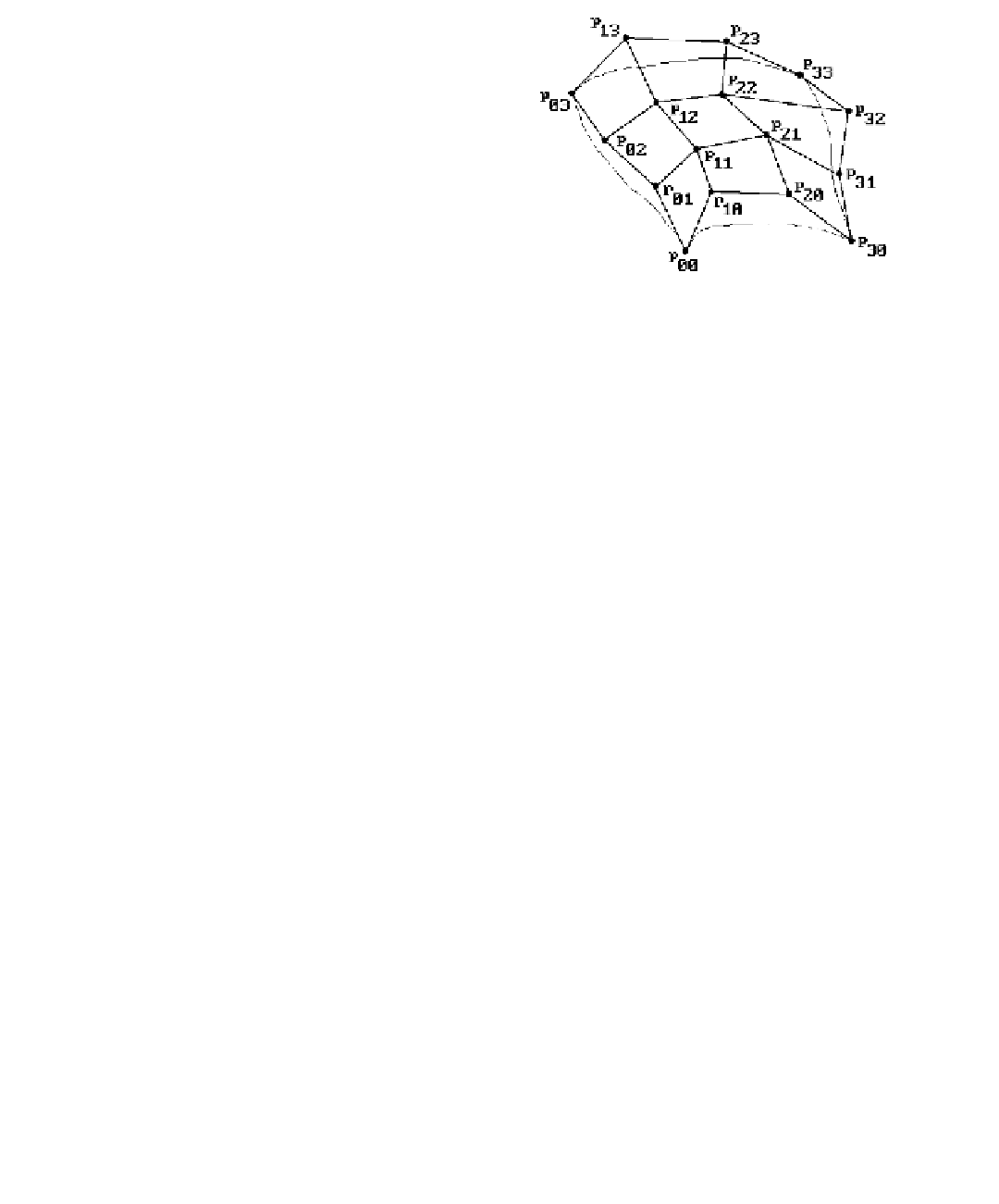Graphics Reference
In-Depth Information
Figure 12.17.
The cubic Bézier surface.
Definition.
The parametric surface p(u,v) is called a
cubic Bézier surface
. The ele-
ments of the matrix
B
b
, namely, the points
p
ij
, are called the
Bézier coefficients
of this
Bézier surface.
To understand this construction a little better, let
1 000
0001
3300
0 000
10 3 0
00 3 0
00 0 3
01 0 3
-
Ê
ˆ
Ê
ˆ
Á
Á
Á
˜
˜
˜
Á
Á
Á
˜
˜
˜
B
=
B
.
b
-
-
Ë
¯
Ë
¯
It is easy to see that
(
)
=
UM BM
h
T
T
puv
,
V
,
(12.42)
h
where
M
h
is the Hermite matrix defined in (11.10). In other words,
B
is the geomet-
ric matrix for the cubic Bézier surface defined by (12.40). Furthermore, a straight-
forward computation shows that p(u,0) is the Bézier curve based on the points
p
00
,
p
10
,
p
20
, and
p
30
. Similarly, the other boundary curves of the surface are Bézier curves
on the corresponding boundary points
p
ij
. One can also show that
3
3
3
3
Ê
Ë
ˆ
¯
Ê
Ë
ˆ
¯
Â
Â
3
-
i
3
-
j
(
)
=
i
(
)
j
(
)
puv
,
uu
j
1
-
v
1
-
v
p
.
ij
i
i
=
0
j
=
0
The cubic Bézier surface can be generalized. Given points
p
ij
, 0 £ i £ m, 0 £ j £ n,
define a function p(u,v), 0 £ u,v £ 1 by
m
n
Â
Â
(
)
=
()
()
puv
,
B
uB
v
p
im
,
jn
,
ij
i
=
0
j
=
0
m
n
m
i
uu
n
j
Ê
Ë
ˆ
¯
Ê
Ë
ˆ
¯
Â
Â
mi
-
nj
-
j
i
(
)
(
)
(12.43)
=
1
-
v
1
-
v
p
.
ij
i
=
0
j
=
0

